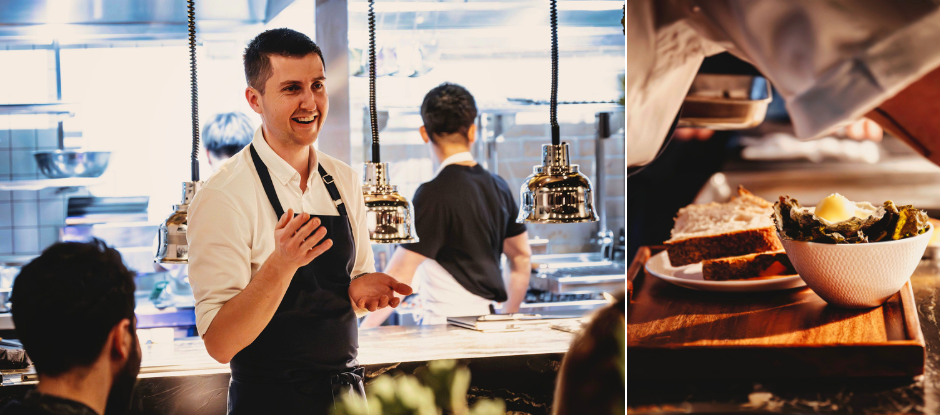From which bits we should eat to how we store and cook it, ‘the fish butcher’ is changing the way the world looks at seafood. Here’s why you need to take notice – and eat more fish eyes
Josh Niland is a modest man, but also a culinary revolutionary. The rising-star chef has just relocated his flagship, Saint Peter in Sydney – which debuted on the extended list of The World’s 50 Best Restaurants in 2024 – to gleaming new premises, where he is showcasing his pioneering approach to fin-to-gill cooking.
In 2023, Niland expanded beyond Australia with the opening of Fysh at the Edition hotel in Singapore. He also owns Fish Butchery, a retail fishmonger, which doubles as a processing and prep kitchen for his restaurants, including the more casual Petermen, in Sydney. Plus, he’s written three outstanding cookbooks.
The new Saint Peter is located at The Grand National Hotel in Paddington, Sydney (Image: Christopher Pearce)
On stage at the recent edition of #50BestTalks: Treasure Hunt in Las Vegas, he captivated the audience by showing how a wild kingfish can be fully broken down into its constituent parts, almost all of which are edible, as well as sharing survival stories from his early days as a naïve restaurateur.
Here are five reasons why the Australian is one of the most important culinary figures of his generation.
1. It’s not just ethics, it’s economics
Niland may be the world’s leading advocate for using every part of a fish, but his motivation is as much about cold, hard economics as it is about sustainability. The logic is simple and sound: most restaurants only serve fish fillets, with a minority perhaps boiling a few other elements to make fish stock, or grilling collars for the staff meal. In doing so, much of the product is still discarded as waste, reducing the opportunity to create further revenue.
As a young chef-restaurateur opening his restaurant in Sydney in 2016, Niland experienced financial pressure first-hand. After a honeymoon period when Saint Peter’s originality was lauded, the reality of high food costs started to bite. “My accountant called and said, ‘You’ve probably got another couple of months and then you’ll have to make some hard decisions and get rid of some people,’” recalls Niland. “I didn’t’ want to lose anybody, so we started to think about how we might use the rest of the fish.”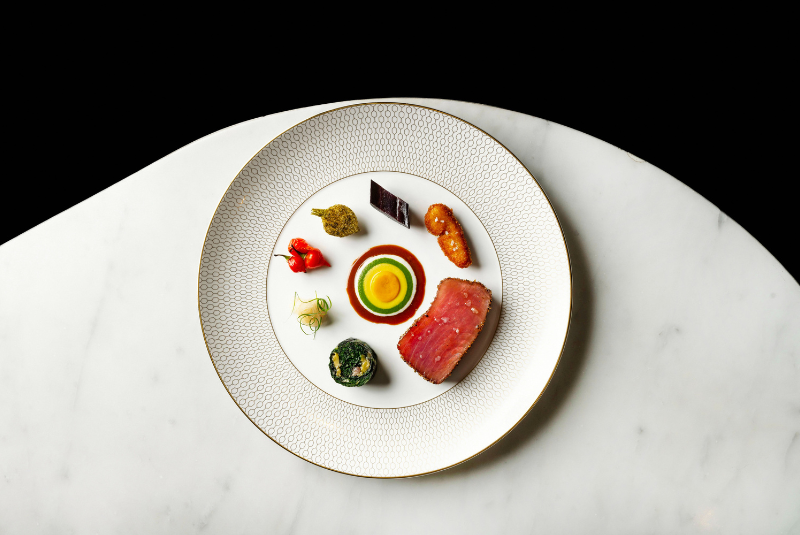
'The fish butcher' has a use for all parts of the fish, except the gall bladder (Image: Christopher Pearce)
In doing so, Niland and his team were able to cut down food costs as a percentage of turnover – a vital measure for the long-term economic sustainability of a restaurant business. “The creativity that we applied to our work provided the momentum to push us forward,” he explains. “I don’t believe you can have innovation without a problem – and our problem was that things cost a fortune when you’re dealing with fish!”
“If we’re able to marry the ethics and the economics, I think that puts us all in a better position, where we can celebrate the extraordinary tastes that a wild fish can offer.”
2. Constant innovation – from fish eye chips to fish bone cake
One of Niland’s superpowers is to create non-fishy flavours from fish. For example, the chef served what was ostensibly a chocolate ice cream cake to the audience at #50BestTalks in Las Vegas. “We take the bones, we boil them, we spray off all the flesh that's on there, and then we pressure cook them for about two and a half hours,” says Niland. “After that the bones are incredibly soft, and we blend that off into a paste, which becomes the structure behind the cake. So it's a fish bone cake.”
“Then in the centre, you've got fish eye ice cream and – shock horror – it doesn’t taste like fish!” he continues. Niland originally chose to work with fish eyes when he opened Saint Peter precisely because they are texturally so challenging, for both customers and cooks.
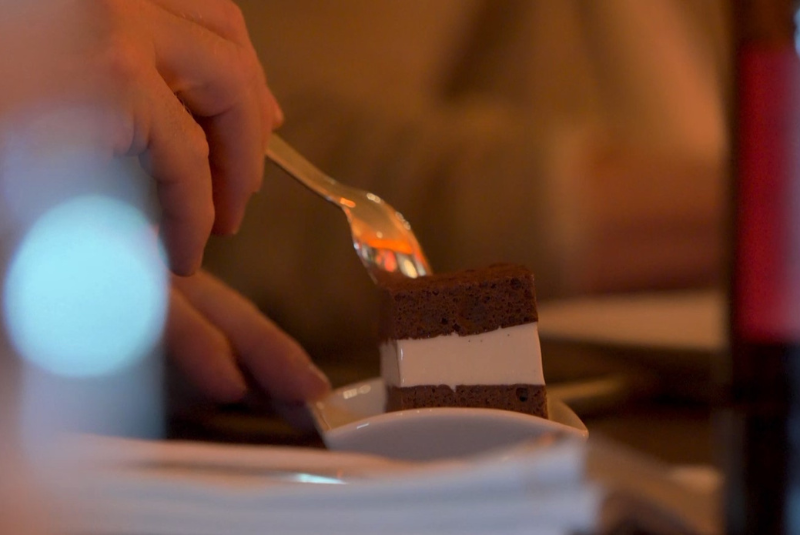
At #50BestTalks in Las Vegas as part of The World's 50 Best Restaurants 2024 event programme, Niland served a chocolate eyes-cream sandwich
“Nobody’s going to comfortably sit down to a bowl of our fish eyes in Sydney and go ‘yum!’ So we made chips out of them, almost like a prawn cracker you’d get in a Chinese restaurant. We gave them to everybody at the start of the meal, but we didn’t tell them what it was made from until later. Then it became a bit of a thing that people talked about,” he says with a degree of understatement.
After preparing and serving thousands of the fish eye chips, Niland wanted to explore what else the team could do. “I actually decided that in order to make something delicious from fish eyes, I needed to understand what an eye is made up of, so I got an optometry textbook and delved into the science,” he says. This piece of unusual research and development phase eventually resulted in the now-famous ice cream.
3. Celebrating the art of fish butchery
There’s a reason Niland is known as ‘the fish butcher’, and it’s in part because the careful breaking down of a whole fish into multiple usable parts is something of a dying skill – though not if Niland has his way.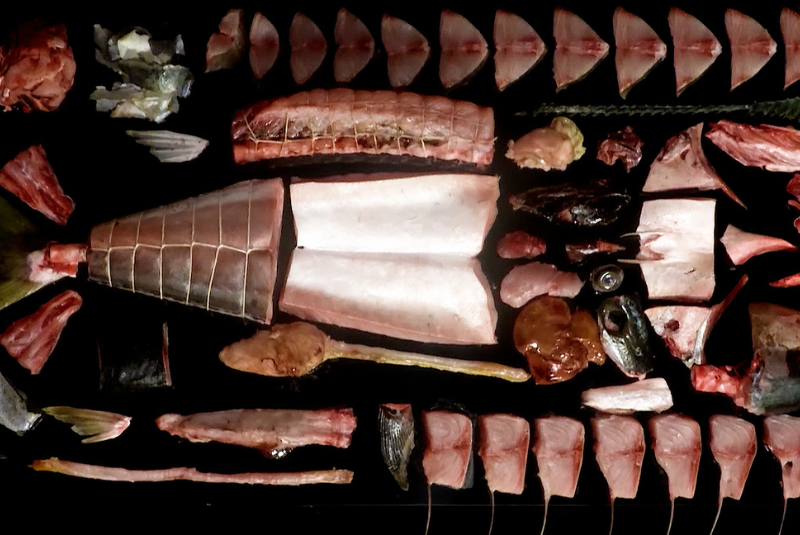
In true CSI: Las Vegas style, Niland broke down a kingfish into its constituent parts
“I've been working with fish pretty much exclusively for the last 15 years, and I've been a cook for 20 years,” he says. “In the first five years of my training, I used to go to a meat butcher every week for about six hours in the morning, and I'd learn how to break down animals. I don't think any butcher worth his salt would ever leave anything behind. Yet too often, we only see fish in terms of fillets. And if you [carve out] certain cuts within the fish, or gut a fish in the traditional manner, that can then compromise other [usable] cuts.”
Niland and his team not only use different elements of the fish, but prepare and serve them in a wide variety of ways: on-the-bone, off-the-bone, butterflied, trussed, frenched, skewered, roasted whole and carved tableside and so on. “The reason we do these more unconventional cuts is because we’re trying to find something desirable, to create a bit of luxury, while capturing the most appropriate margin from each product,” he says.
4. Rethink: stop washing your fish!
It’s all about ammonia, the strong fishy smell people often associate with entering a fishmonger. But it shouldn’t be so, according to our seafood guru.
“We don’t wash our fish. Once a fish comes out of water, it should never go back in – and I think that’s one of the single variables that we do very differently to the rest of the world,” says Niland. By not rinsing the fish, you don’t stimulate the onset of ammonia, which is created when the fish is sprayed with water, poorly handled or kept at the wrong temperature.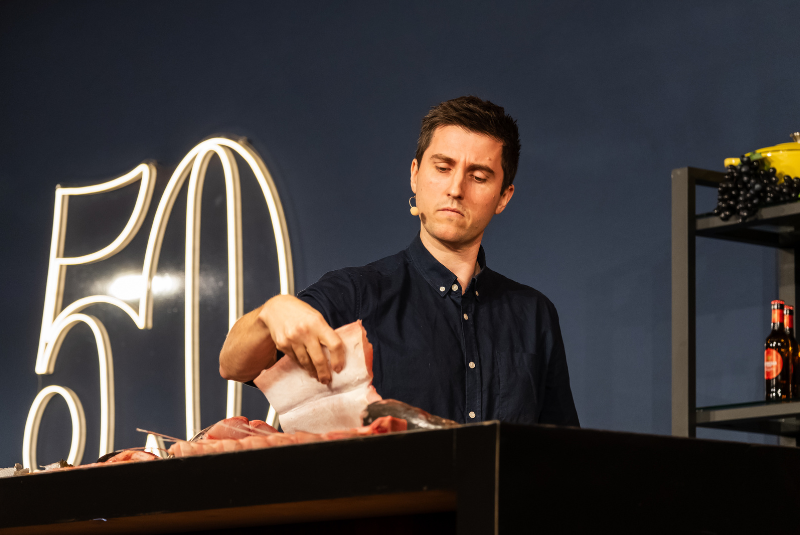
Niland says it's a myth that fish should be washed
With careful storage and handling, fish can also have a significantly longer shelf life, adds Niland. “People tend to think of fish having a three-day window of opportunity, because fresh is best. And I couldn’t agree more that fresh is best, but you also have a moment on day seven, and another on perhaps day 12 and even on day 22.
“If you don’t know that exists, you hit the panic button on day two or three and start ramping up the lemon juice, as the only way to mitigate ammonia is through the use of acidity. This is why recipes, some going back centuries, see fish positioned with acidic ingredients.”
5. Putting it all into practice: the new Saint Peter
In August 2024, Niland and his wife Julie re-opened Saint Peter in the historic Grand National Hotel in Sydney. The boutique hotel in Paddington has been entirely refurbished, with the Nilands operating the 30-seat bar and 40-seat dining room on the ground floor. With double the space of the original venue, it’s a fitting setting for the chef’s visionary approach to whole-fish cooking.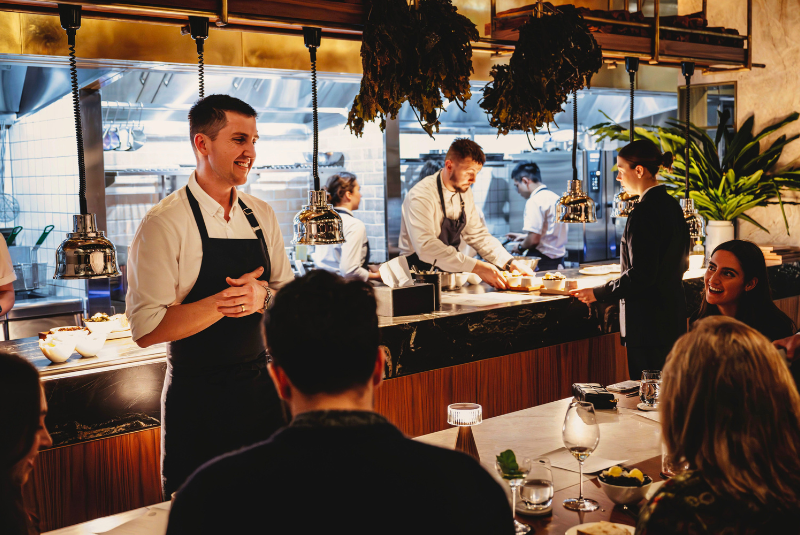
Saint Peter serves an all-seafood tasting menu in its 40-seat dining room (Image: Christopher Pearce)
The restaurant features an open kitchen and a six-seat chef’s table overlooking the pass, with all diners introduced to the menu and team at the kitchen counter shortly after arrival. Saint Peter has retained an a la carte offering at lunch to remain accessible to as many customers as possible, as well as an oyster-led bar menu. Evening service comprises an all-seafood tasting menu (except for dessert). Even the wine list leans towards vineyards sited in oceanic and seaside locations.
Standout moments include the range of fish charcuterie featuring the likes of cod chorizo and John Dory liver paté, a dish of coral trout ‘and its parts’, and a main course of 18-day dry aged tuna wellington with bone sauce.
“There is a lot of conversation around whether we need to stop eating fish altogether,” says Niland. “I don’t think it’s about that. Instead, it’s about being more intentional with how we source and work with fish.”
Now watch the video of Josh Niland’s session at #50BestTalks in Las Vegas:
The list of The World’s 50 Best Restaurants 2024, sponsored by S.Pellegrino & Acqua Panna, was announced at a live awards ceremony on Wednesday 5 June from Las Vegas. To stay up to date with the latest news, follow us on Instagram, Facebook, X and YouTube, and sign up to our newsletter.
(Header image: Christopher Pearce)
